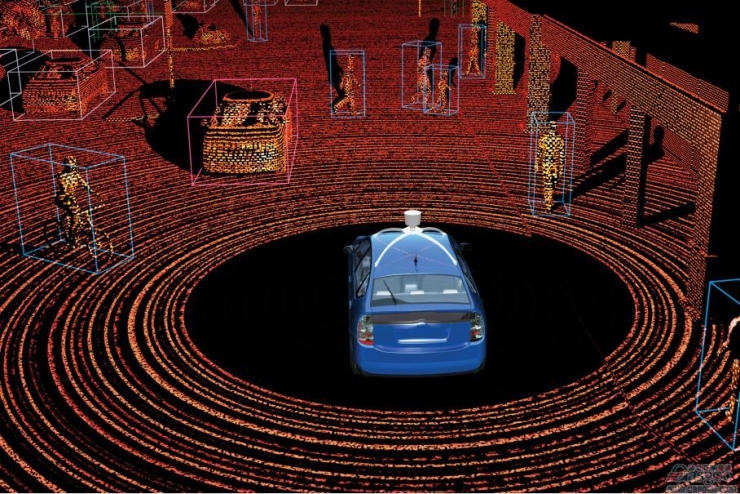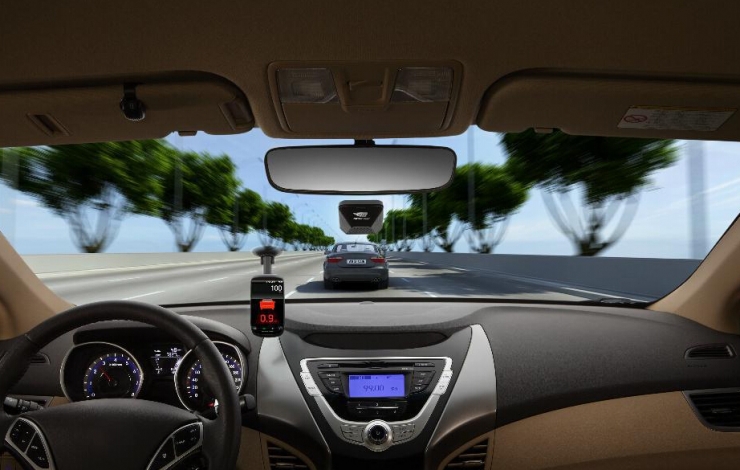
Driverless technology is very mature nowadays. Based on the current level of technology, if the complex traffic conditions in large cities are turned into specific laboratory patterns, vehicles with uniform standards and pedestrians in accordance with the rules are allowed to pass through. Then without a steering wheel, a fully automated car can be launched right now.
The problem lies in how the car can understand the complex traffic conditions in reality and how it can be as flexible as human eyes and brain. The key lies in the need for a variety of sensors to work together to solve the problem. They eventually pass the monitored data to high-precision processors, identify roads, signs, and pedestrians, and make decisions such as acceleration, steering, and braking.
In the part of IntelliSense, the on-board optical system and the on-board radar system are the most important for ensuring the safety of the vehicle. At present, there are three main types of sensors used for ambient environment sensing.
Lidar
By scanning the laser beam reflected from an object to determine the distance of the object, a 3D environment map with a precision of up to centimeters can be formed, so it plays an important role in ADAS (Advanced Driver Assistance System) and unmanned driving systems. Judging from the current vehicle laser radar, the mechanical multi-beam laser radar is a mainstream solution, but factors that are subject to high prices have not yet been popularized.
In addition to deploying sensors such as millimeter-wave radar and video, the Baidu unmanned car body on which the road test was successful on December 10 last year has a large 64-bit laser with a value of more than 700,000 RMB. Radar (VelodyneHDL64-E), Google is also using the same high-end configuration Lidar. The advantages and disadvantages of a vehicle-mounted laser radar system mainly depend on the performance of the 2D laser scanner. The more laser emitter harnesses, the more cloud points are collected per second. However, the more harnesses, the more expensive it is to represent the cost of laser radar.
Take Velodyne's product as an example, the lidar of the 64-wire bundle is 10 times the price of the 16-wire bundle. In addition to its high cost, its performance in smoke media, as well as in rain and snow, laser radar will be deterred by its use.
However, as a core sensor, low-cost solutions will accelerate the arrival of unmanned vehicles. At present, manufacturers of high-precision automotive laser radar products mainly focus on foreign countries, including Velodyne and Quanagey in the United States and IBEO companies in Germany. Domestic laser radar products are currently lagging behind. Senior executive Zhou Shining of China Aerospace Automotive Systems Holdings Co., Ltd. once stated that foreign-funded parts and components companies such as Bosch, China, Valeo, Infineon and Delphi have already seized the high ground of ADAS technology, especially The market layout of sensors, China's auto parts companies have lost in the starting line.
Millimeter wave
The millimeter wave refers to an electromagnetic wave in the frequency range of 30 to 300 GHz (wavelength of 1 to 10 mm). The millimeter wave has a wavelength between centimeter wave and light wave. Therefore, the millimeter wave has advantages of microwave guidance and photoelectric guidance. Compared with the centimeter wave guide, the millimeter wave guide has the characteristics of small volume, light weight and high spatial resolution. Compared with infrared seekers such as lasers, lasers, and televisions, the millimeter wave guide has a strong ability to penetrate fog, smoke, and dust, and has all-weather (except rainy days) all-day features, which can be produced by the role of laser radar. Complementary. In addition, the anti-jamming and anti-stealth capabilities of the millimeter waveguide seeker are also superior to other micro-waveguide seekers.
The disadvantage is that the millimeter-wave radar has very limited detection distance due to the wavelength, and it cannot sense pedestrians, and the laser radar can accurately model all the surrounding obstacles. In order to overcome the disadvantages of different shortcomings, car manufacturers must combine these sensors together.
At present, the millimeter-wave radar is also a standard sensor for the ADAS system of smart cars. According to the current mainstream classification, millimeter-wave radar can be divided into 24GHz radar and 77GHz radar. With reference to its characteristics, it is generally detected that the vehicle around the vehicle uses 24 GHz and the vehicle in front detects 77 GHz. According to China's actual national conditions and the characteristics of the chip R&D progress, there are still market opportunities for 24GHz millimeter-wave radar in the country within the next three years. Looking at the world, the large-scale application of China's 77GHz millimeter-wave radar will be slightly delayed.
Due to the function of ADAS, it is often bundled and sold through sensors and processors. The chips and algorithms of domestic automotive millimeter-wave radar systems mainly depend on imports, which is costly. Accelerating the development of domestically produced 77GHZ millimeter-wave radar chips and on-board applications as soon as possible will be an opportunity for China's automotive millimeter-wave radar industry. Professor Bai Jie of Tongji University Automotive College believes that compared to the fierce competition in the camera, millimeter-wave radar is more innovative, and the potential market space is even greater and there are more opportunities.
Vision sensor
ADAS application camera as the main sensor is because the camera resolution is higher than other sensors, you can get enough environmental details to help the vehicle to recognize the environment, the car camera can depict the appearance and shape of the object, read the logo, etc. The sensor can't do it. From the perspective of reducing costs, the camera is one of the powerful candidates for the identification sensor. Of course, the camera is the best choice in all clear situations, but it is greatly affected by environmental factors and external factors, such as insufficient light in the tunnel and weather conditions. The resulting reduction in the line of sight.
The important tools for collecting image information, some of which are similar to landmark recognition, lane line sensing and other functional intelligence are realized by the camera. The current applications of cameras include: monocular cameras, rear-view cameras, stereo cameras or binocular cameras, and look-around cameras. According to the 2015 global demand of more than 80 million new vehicles and bicycles with 6-8 cameras, the overall demand in the future is expected to reach 600 million super, corresponding to 100 billion market space.
Vision algorithms are indispensable in the ADAS technology route. Active sensors such as millimeter-wave radar have low dependence on the algorithm and the algorithm is simple. Passive sensors such as cameras rely heavily on algorithms, and are generally provided by third-party companies. Such as visual algorithm company Mobileye.

Prior to this, Tesla and Mobileye ended the cooperation in an uproar, Mobileye provided a standard sensor installation method + map data cloud service + software system platform construction, but Tesla wanted to optimize the autopilot experience by crowdsourcing mode to collect data online, EyeQ3 chip limited Tesla builds its own map, so Tesla will develop its own image algorithms and image processing chips in the future.
However, Mobileye still occupied 90% of the market share with several products. This Israeli company is equivalent to BAT in the local arena. The algorithm and hardware are the core of the ADAS system and are the core competitiveness of Mobileye. Mobileye stands at the top of ADAS and throws away several streets of competitors. ADAS and traditional vehicle vision products have different software technology and hardware requirements. It is not easy for traditional automotive electronics companies to enter the ADAS market. It will take at least 3 or 4 years for the domestic team to complete initial technology accumulation from scratch.
Of course, in order to improve the accuracy of the perception of the environment, a combination of multiple sensors is usually required, which ultimately provides a stable and durable solution. The most typical ones today are millimeter-wave radars, lidars and on-board cameras. Other ultrasonic and infrared technologies and the fusion of these technologies will all bring a huge market for the sensor industry. However, it goes without saying that in the years when the car is fully intelligent, the sensor industry chain should be the first to gain.
